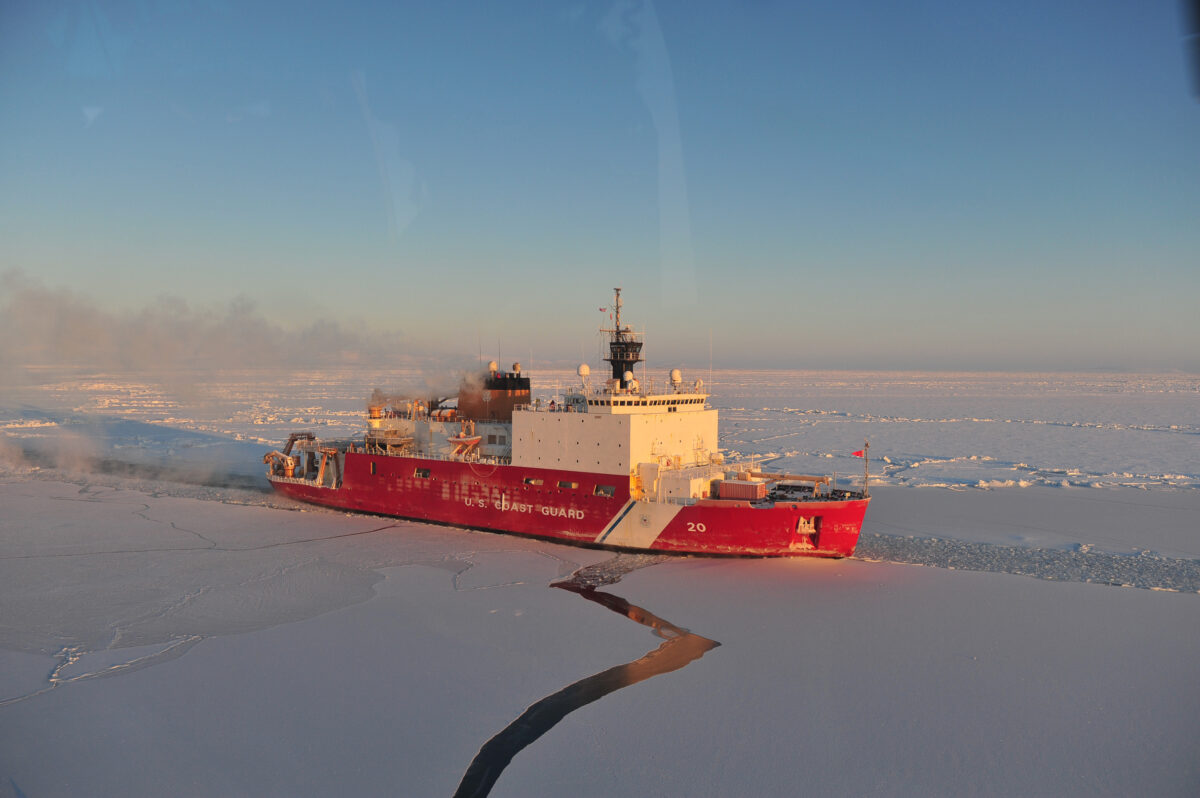The U.S. Department of the Navy is shifting its focus to be more visibly present in the Arctic. Their newly released Blue Arctic plan recognizes the increasingly navigable waters present from the Arctic’s rapidly melting sea ice and remarks that these open waters will require a sustained American naval presence.
On December 3rd, 2020 Senator Dan Sullivan, the chairman of the Senate Armed Services Subcommittee on Readiness and Management Support, hosted a hearing with representatives from the Navy and Marine Corps. U.S. Secretary of the Navy, Kenneth Braithwaite, spoke to his experiences in the Arctic, and asserted that the U.S. should be enforcing its dominance in the region.
“And I’ve seen with my own eyes how the Arctic has changed in those 35 years. Today it is navigable, 365. And there are other nations in the world that have recognized its importance to us, and it should be an alarm to all of Americans as an Arctic nation that we should have a more formidable presence to ensure rule of law and freedom of the seas in that part of the world.”
– Kenneth Braithwaite
The change in diminishing sea ice has brought global attention to the Arctic and many new ships. As the New York Times reported in September, Russia drove a new nuclear powered icebreaker straight to the North Pole for a mock battle. Recent encounters with the Bering Sea fishing fleet, and other actions performed by the Russian military in Arctic waters have been referred to as “war games.”
“With respect to the incident that happened in late August… U.S. fishermen should not feel threated by another nation in our own EEZ in terms of fishing.”
– Navy Admiral Michael Gilday
That’s Navy Admiral Michael Gilday referring to an incident this past August where Bering Sea pollock fishermen were forced out of the U.S.’ “exclusive economic zone” by the Russian military. The Navy foresees that peace and prosperity will be increasingly challenged by Russia and China in the Arctic. Braithwaite reaffirms a need for action.
“Russia has remilitarized the Arctic; China has recommitted itself to build icebreakers to be able to move its product from its homeland to Western markets in half the amount of time than it historically had to. So, the United States Navy [and the United States Marine Corps] is committed to being present in the Arctic in a much more visible way than we have historically been.”
– Kenneth Braithwaite
However, specific tangible examples of how the Navy would assert themselves in the Arctic were left out of the public posting of the Blue Arctic plan. Senator Sullivan suggested a potential option during last month’s committee hearing.
“Mr. Chairman, I always have an opinion. However, as you and I also discussed, the United States Coast Guard does not fall under the command and control of the Departments of the Navy. Of course, we could change that, you can change that, and I would be happy to incorporate the Coast Guard as part of the department Navy as a sister maritime service. I think that would be wonderful.”
– Senator Don Sullivan
Though no concrete plan for consolidation was put in place by the Navy, Senator Lisa Murkowski secured $555 million for the U.S. Coast Guard to spend on an icebreaker. That funding is included in Congress’ year-end funding bill which was approved on December 21st.
Image at top: The Coast Guard Cutter Healy breaks ice in the Nome Harbor Jan. 13, 2012. Photo: U.S. Coast Guard.





